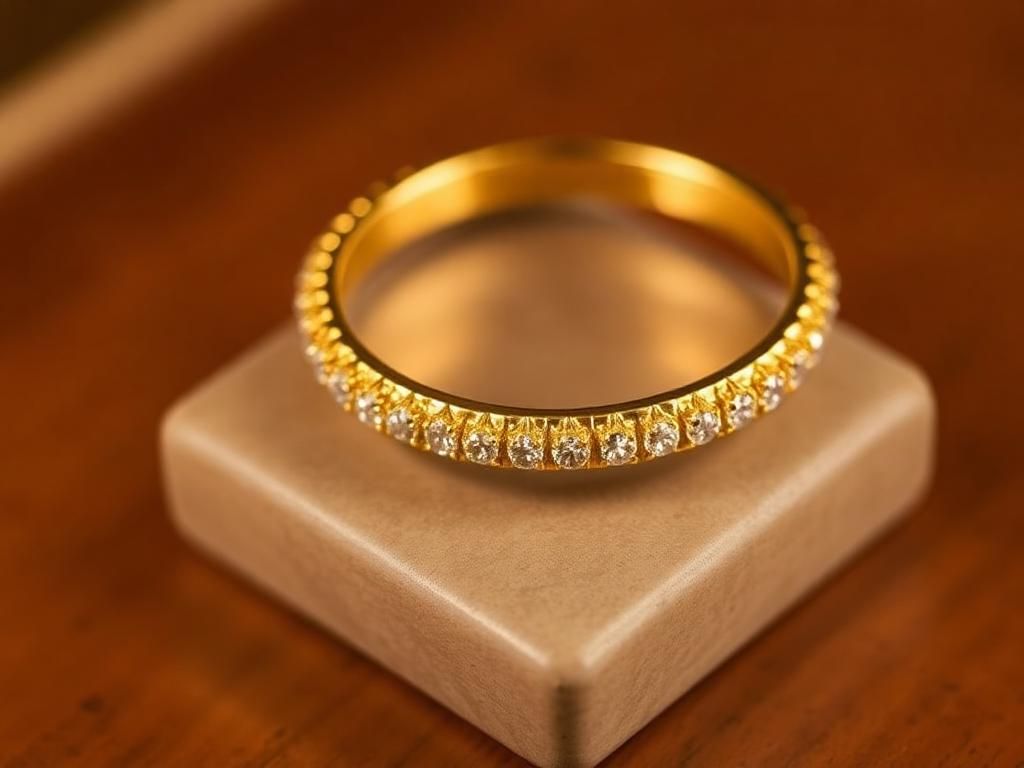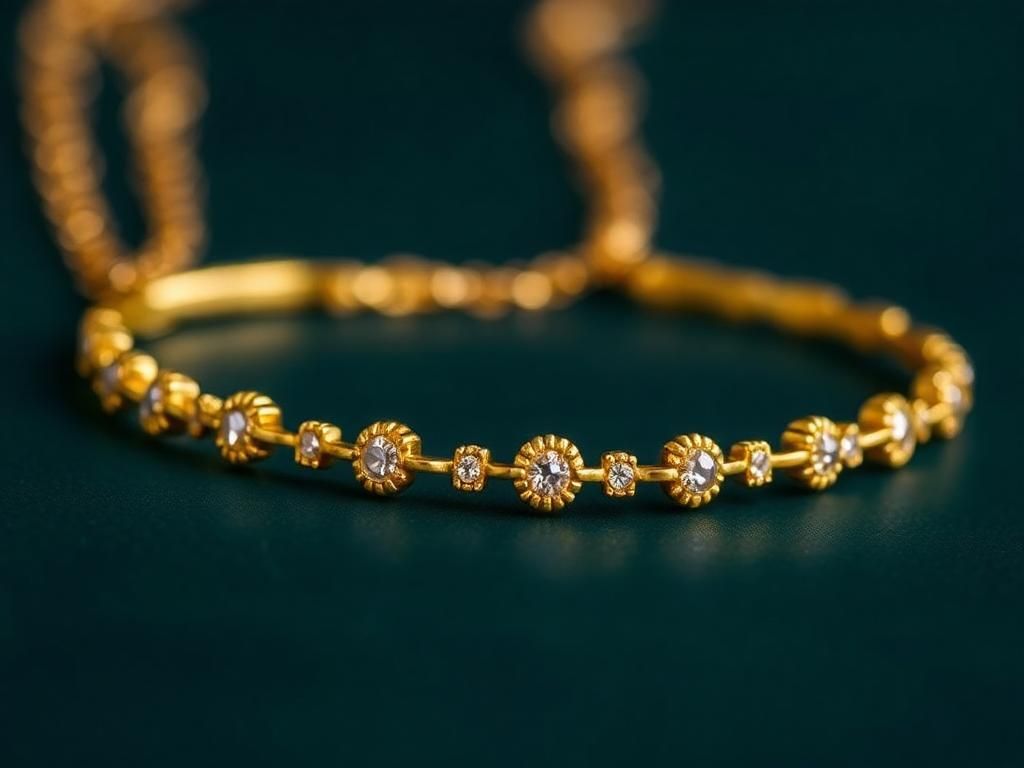Gold plating has become a popular term in the realms of jewelry, fashion, and technology. But what does gold plated mean, and why is it so widely sought after? At its core, gold plating refers to the process of applying a thin layer of gold onto a base metal. This technique creates items that carry the luxurious look of gold but at a fraction of the cost. Understanding gold plating is crucial for consumers, as it allows buyers to make informed decisions when purchasing jewelry and other gold-plated products.
The Process of Gold Plating
What is Gold Plating?
To grasp the term, we must first define what gold plating entails. Gold plating is the process of coating a surface with a thin layer of gold. This coating can vary in thickness and quality. It’s important to note that gold plating is not the same as solid gold; instead, it’s a surface treatment that provides the appearance of gold. Essentially, while solid gold items are made entirely of gold, gold-plated items are typically crafted from less expensive metals, with gold applied to their surface.
There are various techniques used in gold plating, each offering different levels of durability and aesthetic appeal:
- Electroplating: A process that uses electrical current to deposit gold onto the surface of a base metal.
- Mechanical plating: A method utilizing mechanical force to apply gold onto the substrate.
- Chemical plating: Involves a chemical reaction to deposit gold on a surface without electrical current.
Types of Gold Plating Methods
Gold plating can be achieved through various methods, each with its unique properties:
Electroplating
Electroplating is the most common technique used for gold plating. The process involves submerging the item in a gold solution and linking it to an electrical circuit. When electricity flows through, gold is attracted to the item’s surface, creating a thorough and even coat. Electroplating is extensively used in jewelry, electronics, and automotive components, known for its durability and adherence to intricate designs.
Mechanical Plating
Mechanical plating is less common but effective for certain applications. Known for using mechanical forces to deposit gold onto a substrate, this method is particularly suitable for small parts and can be used on items that need to endure extreme conditions. It’s often employed in the fabrication of electronic components and some types of jewelry.
Other Methods
There are additional methods of gold plating, such as chemical plating. This technique does not require electricity but relies on chemical reactions to create a layer of gold on the item. Chemical plating is beneficial for creating uniform coatings and is used in industries requiring intricate surface finishes.
Composition of Gold Plating
Materials Used in Gold Plating
The base metal used in gold-plated items usually includes:
- Copper: Commonly used for its good conductivity and affordability.
- Brass: A combination of copper and zinc, it’s durable and often used in jewelry.
- Sterling silver: Sometimes chosen for its quality and luxurious properties.
When it comes to the gold itself, it can vary in karats and quality. Common options include:
- 24K Gold: Pure gold, often used in a thin layer for a rich look.
- 14K Gold: Contains about 58.3% gold and is more durable.
Understanding differences in thickness and purity is vital when choosing gold-plated items, as it affects both appearance and longevity.
Understanding Gold Plating Standards

The quality of gold plating is often determined by its thickness, typically measured in microns. Common standards include:
- 0.5 microns: Considered minimal, suitable for fashion jewelry.
- 2.5 microns: Provides a more durable and longer-lasting coating.
There are industry standards, such as those set by the ISO and ASTM, which help gauge quality. Following these standards ensures that items retain their appeal over time. Knowledge of the thickness of gold plating can help consumers make informed choices, as a thicker layer usually implies better durability and richer color.
Advantages of Gold Plating
Aesthetic Appeal
One of the main reasons people gravitate towards gold-plated items is their visual appeal. Gold-plated products capture the essence of luxury without the hefty price tag of solid gold. Their shiny, lustrous finish can elevate the style of any outfit, making them a popular choice in fashion accessories and jewelry.
Cost-effectiveness
In terms of affordability, gold-plated items present a remarkable value proposition. While solid gold can be prohibitively expensive, gold plating allows consumers to enjoy the gold aesthetic without breaking the bank. This accessibility has opened up options for many, allowing more people to add golden touches to their wardrobes or homes without significant financial burdens.
Versatility
Gold plating is not limited to just jewelry; it finds applications across various industries, including:
- Electronics: Ensures better conductivity and enhances component reliability.
- Watches: Offers a stylish look while extending the lifespan of timepieces.
Additionally, consumers can opt for customization options, with various color and finish variations available that can satisfy personal preferences.
Disadvantages of Gold Plating
Durability Concerns
While gold plating has its advantages, it also has some durability concerns. The lifespan of gold-plated items is generally shorter than that of solid gold. Over time, wear and tear can cause the gold layer to diminish, potentially leading to exposure of the base metal underneath. Several factors can affect durability, including:
- Skin Types: Certain skin types may cause quicker tarnishing due to reactions with skin pH.
- Climate: Humid or overly dry conditions can influence the longevity of gold plating.
Allergic Reactions
Gold-plated items can sometimes lead to allergic reactions, especially if the base metal contains common allergens such as nickel or brass. Signs of allergies may include rashes, itching, or irritation when wearing these items. It is essential for consumers with known sensitivities to check the composition of gold-plated jewelry before purchasing.
Caring for Gold-Plated Items
Maintenance Tips
Caring for gold-plated items properly can help preserve their appearance and extend their lifespan. Here are some essential maintenance tips:

- Proper Cleaning: Use a soft, damp cloth to clean gold-plated items and avoid harsh chemicals.
- Recommended Storage: Store items in soft pouches or jewelry boxes to prevent scratches and wear.
Regular maintenance is vital for maintaining the luster and appeal of gold-plated jewelry.
Signs It’s Time to Replate
Identifying when gold-plated items require replating involves looking for signs of wear. If you notice:
- Fading or dullness in shine,
- Exposed base metal,
- Scratches on the surface,
These may indicate that it’s time to consider replating. Options include DIY replating kits for the adventurous or professional replating services for a more robust solution.
Conclusion
Understanding what does gold plated mean is essential for consumers who wish to invest wisely in jewelry and products. From appreciating the processes involved in gold plating to recognizing the advantages and disadvantages, knowledge empowers buyers. By prioritizing quality and proper care, consumers can enjoy the benefits of gold plating while mitigating potential downsides. As you navigate through your purchase choices, remember that informed decisions lead to fulfilling experiences with your gold-plated items.
Additional Resources
For those seeking further information about gold plating, here are some valuable resources:
| Thickness | Type | Common Uses |
|---|---|---|
| 0.5 Microns | Minimal | Fashion Jewelry |
| 1 Micron | Standard | Cost-effective Jewelry |
| 2.5 Microns | Durable | High-Quality Jewelry & Watches |
Frequently Asked Questions
1. What does gold plated mean?
Gold plated means an item is coated with a thin layer of gold over a base metal.
2. How long does gold plating last?
The lifespan can vary, but generally, gold plating lasts from a few months to a couple of years, depending on care.
3. Can gold-plated jewelry cause allergies?
Yes, some base metals in gold plating may cause allergic reactions in sensitive individuals.
4. How do you care for gold-plated items?
Clean gently with a damp cloth and avoid chemicals. Store them carefully to prevent scratches.
5. What is the difference between gold plated and gold filled?
Gold filled items have a thicker layer of gold than gold plated, making them more durable.
6. Can gold plating be reapplied?
Yes, items can be replated professionally or through DIY kits if they show signs of wear.
7. Is gold plating worth it?
Gold plating provides the aesthetic of gold at a lower cost, making it a good choice for many.
8. What is the best thickness for gold plating?
A thickness of 2.5 microns is recommended for durability and longevity.
9. Why do some people prefer gold-plated jewelry?
Due to its affordability and stylish appearance, gold-plated jewelry is a popular choice.
10. Can I wear gold-plated jewelry every day?
While you can, take care to maintain it and remove it in situations that may cause excessive wear.